Day 4: Descending in Terror
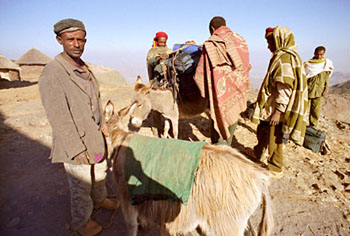 Now packing FIVE people's luggage onto two small donkeys |
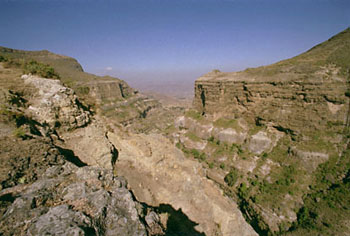 View from lower in the valley |
The route between Aterow and Yadukulay was precipitous and rocky. In fact, the path was nothing but rocks, which were unfortunately not large enough or small enough to simply walk on. These rocks slid every time I stepped on one, and I could do nothing but step on them as there wasn't a single bit of solid footing.
I felt additionally self-conscious because no one else in my group was having difficulty, although they all claimed to have been unnerved by the path as well. Our guide flew down the valley, in typically impractical rubber clogs while I struggled to descend in sturdy boots. The rest of the crew wasn't nearly as quick but they still walked as if they'd found a secret staircase. I wobbled on every step, heart pounding, mind fixated on the weak ankles that had turned out many a time on well-maintained New York sidewalks. Mulugeta's paternal fretting was making me feel worse.
I heard later that it's also possible to climb up from Yadukulay to Aterow, which would certainly be more strenuous but less difficult. I'm not sure how the guides decide which route to take. Long after I'd returned to New York, Mulay gushed over email that we had been his best group ever, the most adventurous ever...perhaps he'd chosen the descent over the climb for this reason. Or maybe Yadukulay simply was occupied the previous night.
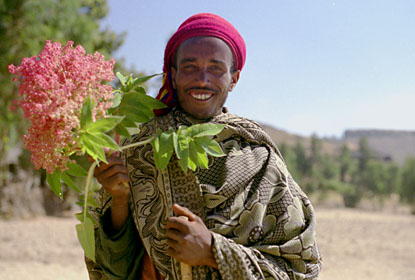 Our friendly local guide of the day |
Since my small stumble heading toward Wajela camp a few days prior, I'd secretly experienced occasional visions of tumbling off one of Meket's cliffs. Having dismissed my fears as irrational due to our mainly flat hikes, I was horrified to be now living that nightmare.
Mulay distracted me with small talk through another frightening descent until we reached open fields where farmers used oxen to thresh wheat. While we watched this slow traditional process, children eagerly crowded around for photos. Every time I raised my camera to photograph the hardworking cows, a child would slowly sidle into frame. Yes, I see you...hellohellohello.
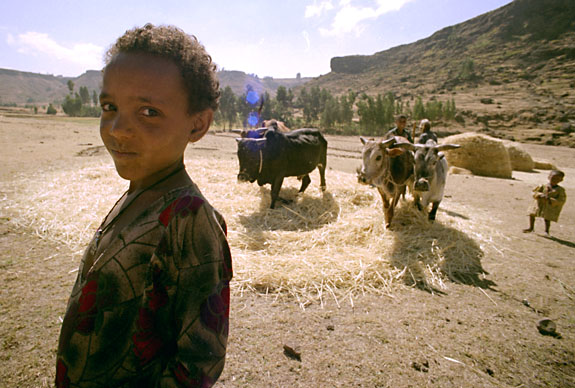
Tried to take a picture of the traditional thresing method but kids wanted to pose as well
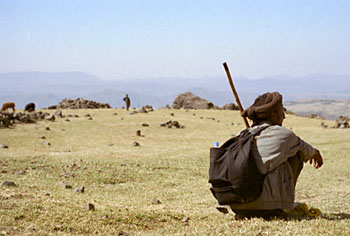 Local guide #2 rests after running downhill in rubber clogs |
It was amazing that in a place so rural, where most people had probably never seen a light switch, that no one seemed aware that non-digital cameras exist. Kids seemed quite disappointed they couldn't see the photos I took, and adults were mystified as well. I was so glad to be trekking with people with digital cameras so I could partake in the community's delighted reactions.
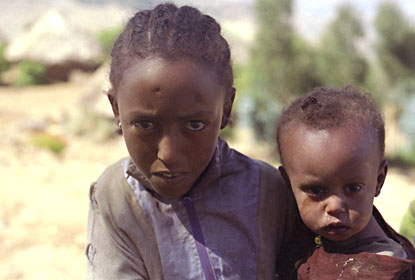 This girl had followed me for quite some time, never smiling or shrieking hello like the others. Just lugging her sister and curiously watching. |
As off-the-beaten track as TESFA's route is, it still manages to stay booked, even double-booked now that there are three guides and four camps available. While on the one hand, the community was able to maintain its traditional lifestyle due to TESFA's work, and even improve things with tourist dollars, it could not resist change when tourists passed through every single day.